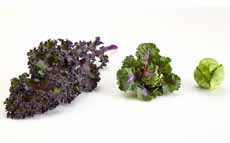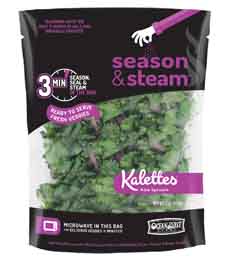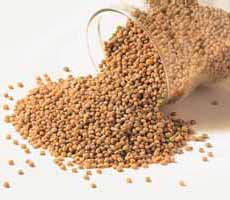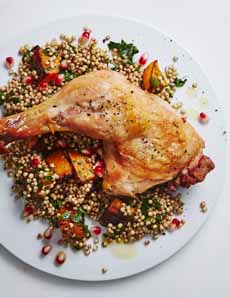TIP OF THE DAY: Try These 2017 Food Trends
|
What’s trending in 2017? Every expert has an opinion, but here are some from the James Beard House. CAULIFLOWER IS THE NEW KALE Hmmm…we thought kale was the new cauliflower, back in 2013. But we’re so over kale and still in love with cauliflower, that we won’t fight this one! Cauliflower is so much more versatile. It can be mashed, instead of potatoes; it can be riced; it can be grilled like a steak. Each of these recipes is a treat: What do you get when you cross kale with Brussels sprouts? Kalettes, a dual cruciferous powerhouse. Combining the best flavors of both “parents” results in a fusion of sweet and nutty, which can be prepared in endless ways. It’s the first new vegetable to hit the market since broccolini. They grow on tall stalks like Brussels sprout, but have leafy heads—as if that solid Brussels sprout turned into feathery kale. And they’re much more tender than kale, which is so much more appealing in salads. Here’s more about kalettes. Recipes: Whey is a by-product of cheese-making. In fact, after centuries of feeding it to the farm animals, a clever cheesemaker figured out how to re-cook it into ricotta (which means “recooked”). Why is a byproduct of yogurt-making, too. In Greece, the acidic and delicious whey is used to marinate lamb; in the U.S., it is sold as whey powder in health food stores. But much domestic whey is discarded. At last: Bottles of whey for drinking and cooking have been spotted at health food stores and natural foods chains like Whole Foods. In 2017, look to say “Way!” to whey. Sorghum is an ancient grain and a nutritious whole grain; but for the last century or so in the U.S., which is the world’s largest grower, it has mostly been grown for animal feed. Made into a syrup, was the most popular sweetener in 19th century America. On-trend chefs have been using it to glaze and braise. But until recently, we had no idea that it was sold in grain form. Now, it’s poised to become the latest “new” gluten-free grain of the moment. Sorghum resembles Israeli couscous in shape, but is sweet, not earthy. We had our first bite recently, and it is delicious! Sorghum can cooked in any grain recipe; it can be popped like popcorn. You can bake with sorghum flour (it’s often part of GF flour mixes). Start with Bon Appétit’s delicious recipe for Roast Chicken with Sorghum and Squash. Here’s more about sorghum, plus two (of the soon to be numerous) dedicated sorghum cookbooks: |
[1] The newest vegetable in years, kalettes (center) are a cross between kale (left) and brussels sprouts (right—photo courtesy Modern Farmer). [2] Look for packaged qualities (photo courtesy Ocean Mist). [3] Turn them into salads or delicious dishes like Thai Spiced Kalettes (here’s the recipe from One Tomato Two Tomato). [4] Make sorghum your new grain. You can buy it at Whole Foods and other natural foods markets, or online (photo courtesy Easy Me World | Blogspot). [5] Roast chicken with sorghum. Here’s the recipe from Bon Appetít. |
|
|
WHERE’S THE BEEF? According to the U.S. Department of Agriculture, the consumption of red meat peaked in the 1970s. But until recently, at restaurants around the country, it was rare to find a menu that didn’t offer a juicy steak or other red meat. With increased costs, more concern about sustainability (forests are cut down for grazing land, steers generate tons of methane, and both contribute to greenhouse gas), or a change in tastes due to international cuisines that don’t focus on red meat, restaurants and homes alike are using less beef. Except for the ubiquitous burger. Vying to take beef’s place: duck, lamb, venison, pork, and more vegetarian and grain mains. Do your part: Instead of beef, choose something else—preferably a nice veggie burger. Pick up a book on vegetarian entrées. |
||
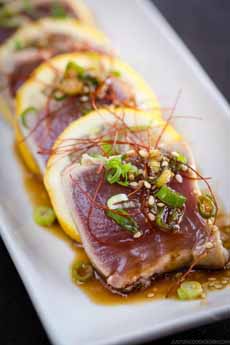
|
VEGETABLES TAKE CENTER STAGE For nutrition, weight control, sustainability, easy of clean-up and for flavor, vegetables are becoming the star of the show for non-vegetarians. Vegan restaurants are gaining popularity with mainstream eaters. Perhaps this is the year to re-think Meatless Monday, which sounds like abstinence, to Voluptuous Veggie Day. And have fun doing it! FERMENT YOUR WAY TO HEALH Fermented foods like sauerkraut and kombucha are very healthful. And fermentation has fascinated chefs for years, as they’ve tried to uncover new ways to create naturally complex flavors, nuanced textures, and other gastronomic excitement. The new magazine Cured focuses on aging and fermenting food, and cookbooks like Bar Tartine give explicit instructions about how to ferment your own condiments. Fermented foods have been made for millennia. So before you think new, think old: older, bubbling, cultured and fermented. And check out this book. Move over crudo and carpaccio. From fish to beef, toro to kobe, tataki is an appetizer expected to sweep the nation. The protein is quickly seared, then thinly sliced, brushed with a bright vinegar, and presented with a host of east-meets-west accompaniments. Recipes are beautiful, healthful, and very tasty. Start with these: Never had tataki? Head to the nearest Japanese restaurant for a starter of tuna tataki. Then, pick up some tuna or salmon and make your own at home. WASTE NOT, WANT NOT With nearly half of all food produced in the U.S. going to waste, concerned restaurants, professional chefs and even home cooks are learning to create delicious dishes with parts of the animal, fruit, or vegetable that would normally end up in the trash. Top chefs are focusing on it; Mario Batali, Tom Colicchio and others are speaking out about how we can all reduce waste in our kitchens. Introductory recipes for waste-less cooking are popping up everywhere. It’s not hard: Instead of throwing out watermelon rinds, pickle them! Here’s a recipe. Seattle is the city pioneer in waste not, want not: In 2014, it began to impose fines on households and restaurants. Here’s the scoop. For the health of our planet and our legacy to our grandchildren, this is a trend we hope will have staying power. |
|
|
|
||
